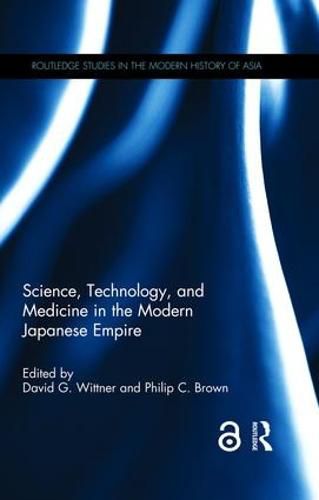Readings Newsletter
Become a Readings Member to make your shopping experience even easier.
Sign in or sign up for free!
You’re not far away from qualifying for FREE standard shipping within Australia
You’ve qualified for FREE standard shipping within Australia
The cart is loading…






Science, technology, and medicine all contributed to the emerging modern Japanese empire and conditioned key elements of post-war development. As the only emerging non-Western country that was a colonial power in its own right, Japan utilized these fields not only to define itself as racially different from other Asian countries and thus justify its imperialist activities, but also to position itself within the civilized and enlightened world with the advantages of modern science, technologies, and medicine.
This book explores the ways in which scientists, engineers and physicians worked directly and indirectly to support the creation of a new Japanese empire, focussing on the eve of World War I and linking their efforts to later post-war developments. By claiming status as a modern, internationally-engaged country, the Japanese government was faced with having to control pathogens that might otherwise not have threatened the nation. Through the use of traditional and innovative techniques, this volume shows how the government was able to fulfil the state’s responsibility to protect society to varying degrees.
Chapter 14 of this book is freely available as a downloadable Open Access PDF under a Creative Commons Attribution-Non Commercial-No Derivatives 3.0 license. https://s3-us-west-2.amazonaws.com/tandfbis/rt-files/docs/Open+Access+Chapters/9781138905337\_oachapter14.pdf
$9.00 standard shipping within Australia
FREE standard shipping within Australia for orders over $100.00
Express & International shipping calculated at checkout
Science, technology, and medicine all contributed to the emerging modern Japanese empire and conditioned key elements of post-war development. As the only emerging non-Western country that was a colonial power in its own right, Japan utilized these fields not only to define itself as racially different from other Asian countries and thus justify its imperialist activities, but also to position itself within the civilized and enlightened world with the advantages of modern science, technologies, and medicine.
This book explores the ways in which scientists, engineers and physicians worked directly and indirectly to support the creation of a new Japanese empire, focussing on the eve of World War I and linking their efforts to later post-war developments. By claiming status as a modern, internationally-engaged country, the Japanese government was faced with having to control pathogens that might otherwise not have threatened the nation. Through the use of traditional and innovative techniques, this volume shows how the government was able to fulfil the state’s responsibility to protect society to varying degrees.
Chapter 14 of this book is freely available as a downloadable Open Access PDF under a Creative Commons Attribution-Non Commercial-No Derivatives 3.0 license. https://s3-us-west-2.amazonaws.com/tandfbis/rt-files/docs/Open+Access+Chapters/9781138905337\_oachapter14.pdf